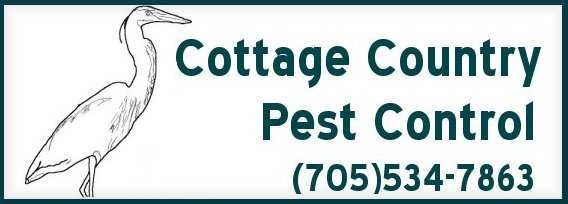Today, we're going to take a break from talking about creepy crawlies and give you some information about pesticides.
In Canada, the use of pesticides is regulated by Health Canada under the
Pest Control Products Act, and are among the most heavily regulated substances in Canada.
The Pest Management Regulatory Agency is the branch within Health Canada that administers the Act on behalf of the Minister of Health.
Did you know it's a criminal offense to bring pesticides into Canada that were purchased in another country? It's also (obviously) illegal to use pesticides in Canada that were purchased in another country. Any pesticide that is not regulated by Health Canada is illegal to use. Ontario also has legislation that prohibits the sale or use of many pesticides unless you are a licensed pest control person.
General Information
According to Health Canada, a pesticide is "any product, device, organism, substance or thing that is manufactured, represented, sold or used as a means for directly or indirectly controlling, preventing, destroying, mitigating, attracting or repelling any pest".
So, by following that definition, pesticides include:
- Herbicides-used against plants
- Insecticides-used against bugs
- Fungicides & antimicrobacterial agents-used against fungus and other micro organisms
- Material & wood preservatives
- Animal & insect repellents
- Insect & rodent-controlling devices: such as mosquito zappers and mouse traps
- Algicides-used to control algae in pools and spas
Why are Pesticides Necessary?
If pests are not properly managed, they can affect the quality of life in many ways. One easy example of this is termites. If left alone, termites will cause structural damage to homes and other buildings.
Pests, while sometimes benerficial, can represent a threat to public health and the environment, so sometimes pesticides are necessary.
In addition to regulating pesticides, Health Canada also promotes and encourages the use of many pesticide-free methods (which
Cottage Country Pest Control fully supports) for controlling pests by using strategies such as:
Answer the question: Do I really have a pest problem?
Understand pest behaviour
Modify your physical environment to make it less attractive to pests; and
Modify your physical environment to altogether repel the pest
*please note, the previous strategies are verbatim from the Health Canada website*
If you choose to use pesticides (without calling a professional), it is very important that you follow all labels, warnings and directions and ALWAYS use them according to regulations. Should you decide to hire a professional who is reputable, such as
CCPC, who is willing to discuss all your options and concerns with you in order to rid your home of pests.
When it comes down to it, using pesticides can be a solution to ridding your home from an infestation. However, it's important to know that there are other options available these days before automatically turning to the use of pesticides.
Cottage Country Pest Control has environmentally responsible solutions to solving your pest problem, that are not harmful to you, your family or your pets.
Quick Note: If you are interested in reading the whole Pest Control Products Act, you can find it online here.

